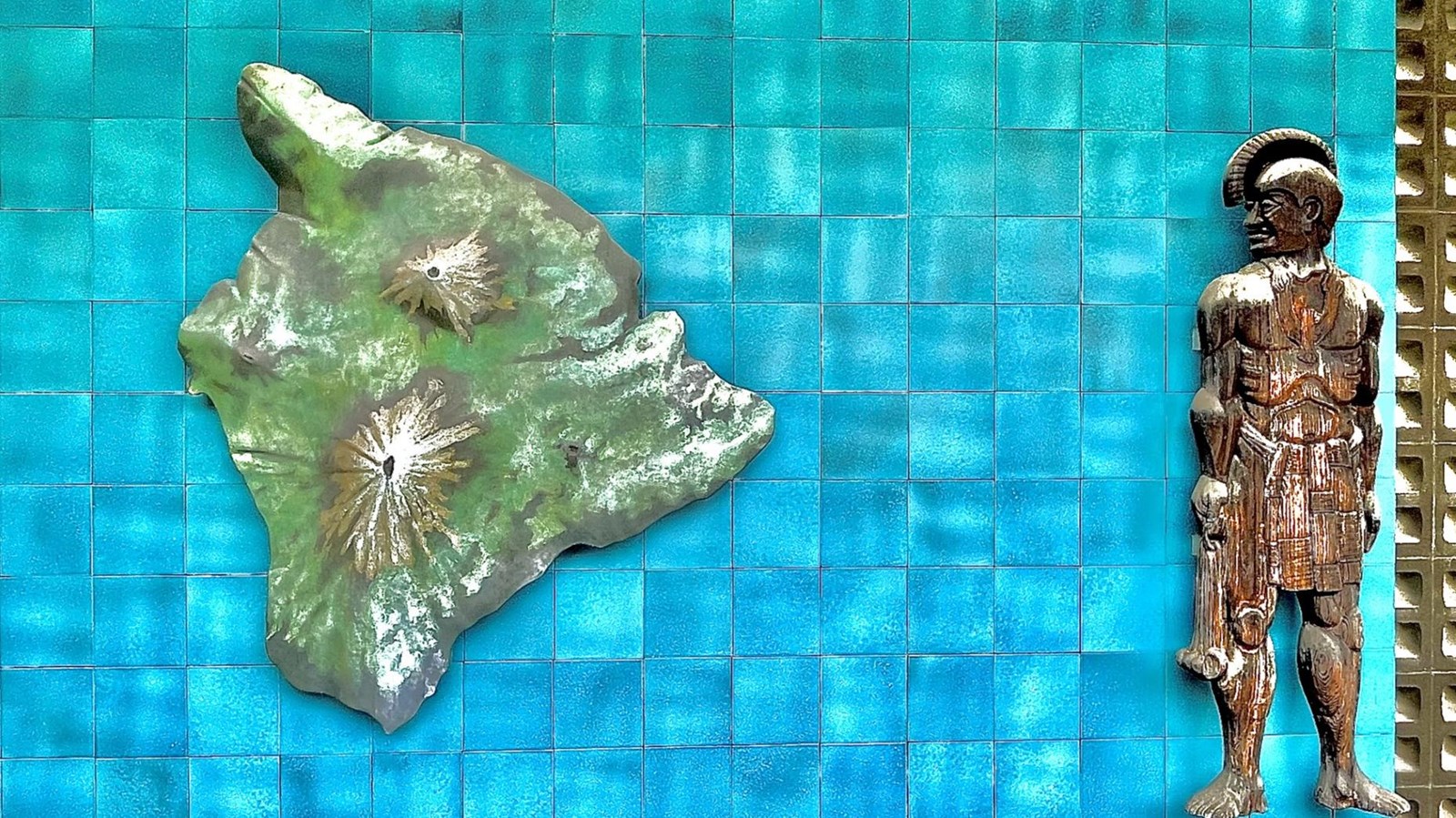Last updated: October 28, 2023
Place
Mural V - Pu'uhonua

NPS Photo/Holiday
Unlike the lands outside of it, Pu'uhonua were not governed by the Ali'i but by the Gods they revered. One translation of Pu'uhonua is "rising/elevated lands" and alludes to the function a Heiau (temple) of this type served. Pu'uhonua were in a sense like ancient hospitals, where one could enter sick, be treated by skilled Kahuna La'au Lapa'au (master plant healers), and leave elevated with their health. A Pu'uhonua is where many Kahuna (skilled craftsmen/priests) resided. If you did not have a role to play in your community, entering into the Pu'uhonua you could apprentice under a master and perhaps one day leave elevated with purpose.
For those who had broken the divine laws of Kapu, a Pu'uhonua offered them sanctuary where they were able to undergo a process of reformation physically, mentally, and of course spiritually.
Though the Pu'uhonua of Hōnaunau was believed to be the most powerful, there were once many temples like it found around our islands' shores. After the passing of Kamehameha the Great , his eldest son and wives chose to discontinue many of the traditions of his ancestors and what led to the destruction of many of our sacred sites found around the archipelago. Pu'uhonua o Hōnaunau is considered the last ancient Pu'uhonua that still remains greatly intact today, and continues to be utilized by kanaka maoli (native hawaiians) for religious and spiritual ceremony.
For those who had broken the divine laws of Kapu, a Pu'uhonua offered them sanctuary where they were able to undergo a process of reformation physically, mentally, and of course spiritually.
Though the Pu'uhonua of Hōnaunau was believed to be the most powerful, there were once many temples like it found around our islands' shores. After the passing of Kamehameha the Great , his eldest son and wives chose to discontinue many of the traditions of his ancestors and what led to the destruction of many of our sacred sites found around the archipelago. Pu'uhonua o Hōnaunau is considered the last ancient Pu'uhonua that still remains greatly intact today, and continues to be utilized by kanaka maoli (native hawaiians) for religious and spiritual ceremony.
-
Mural 5 - Wahi Kapu
An introduction to the concepts of kapu and the purpose such rules served.
- Date created:
- 10/23/2023
